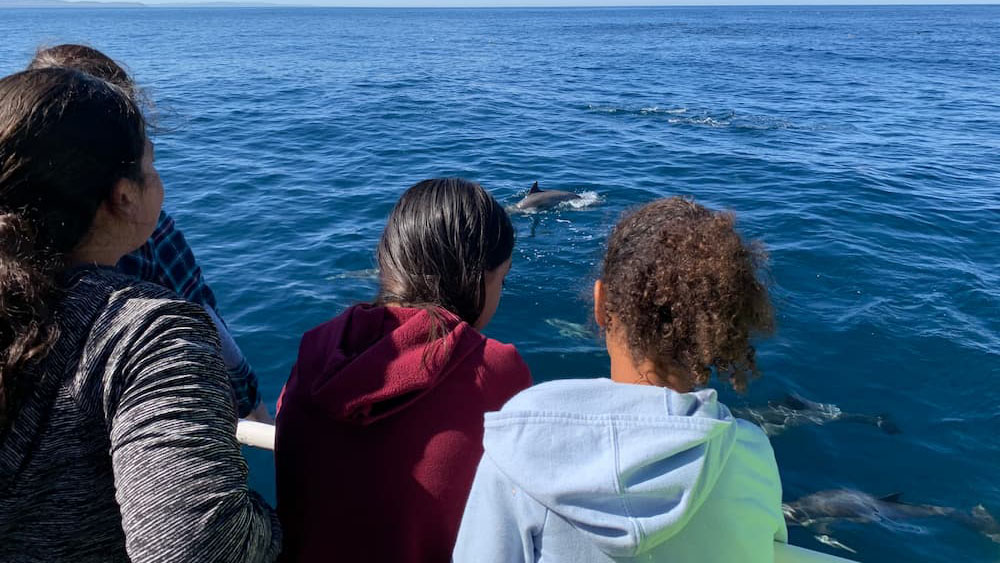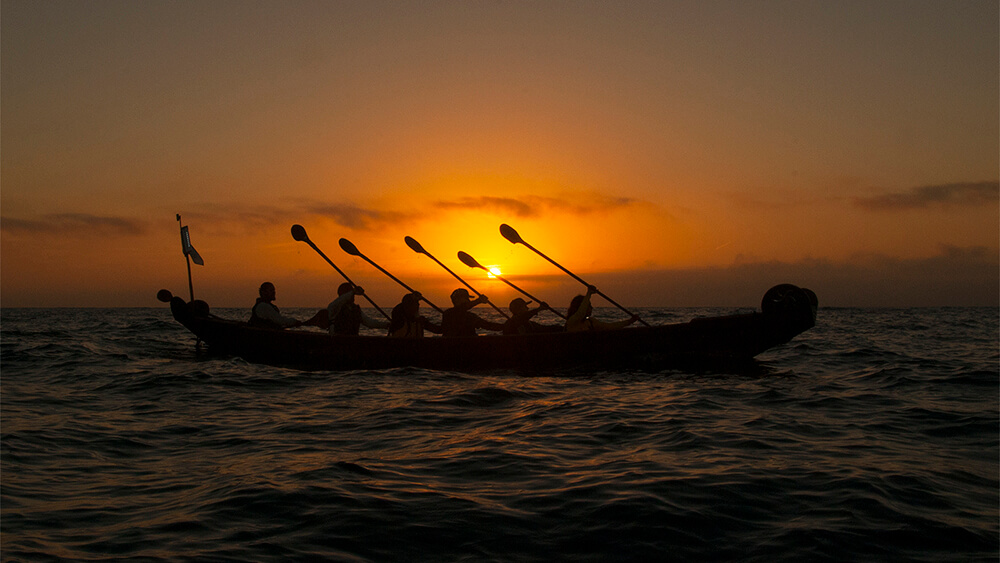Ecosystem Services
Conservation Issue

Ecosystem services are the conditions and processes through which ecosystems sustain and enrich human life. In the case of Channel Islands National Marine Sanctuary (CINMS), ecosystem services are the benefits that people derive from the natural world that is protected within the sanctuary. These benefits encompass existing services, as well as the capacity for the sanctuary to build resilience to changing ocean conditions. Understanding the services the sanctuary provides to different communities can help us protect those services and balance the multiple and sometimes competing needs and values of different groups.
Description
Ecosystem services are typically classified into four categories (supporting, provisioning, regulating, cultural) and can include direct, indirect, and relational benefits. To date, twelve ecosystem services, including cultural, provisioning, and regulating services, have been assessed in the CINMS condition report (e.g., education, research, consumptive recreation, sense of place, and heritage). Some benefits of ecosystem services may be expressed as dollar values (e.g., the recreational diving industry, commercial fishing) while others cannot be monetized (e.g., the cultural and spiritual value of sanctuary waters to the Chumash people). A systematic understanding of tangible and intangible ecosystem services can be used to identify what matters to different communities, why it matters to them, and their level of satisfaction with the ecosystem services. This information can guide the development of robust and effective strategies to protect, restore, and/or enhance these benefits. Furthermore, it provides opportunities to identify how the ecosystem services currently provided by the sanctuary can be extended to underrepresented communities and groups.

Data and Analysis Needs
- Identification of ecosystem services that are important to various groups of stakeholders/sanctuary users
- Information on how sanctuary users perceive ecosystem services and risks to these services
- Interactions and tradeoffs between services, activities, and benefits for different user groups
- Where appropriate, quantification of economic value derived from specific ecosystem services
- Where appropriate, documentation of intangible, spiritual, cultural, heritage, and other ecosystem services and the systems of practice and knowledge to which they are connected
- Conditions, spaces, and resources needed for the continuation of traditional and local ecological knowledge, and barriers that exist to those processes
- Perceptions of resource conditions in the past, present, and future
- Assessment of how changing ocean conditions and the adaptive capacity of stakeholders influence the sanctuary's ability to provide current and future services, including identification of anticipated tipping points
- Evaluation of opportunities for sanctuary-based research to examine the role of sanctuary resources (e.g., seagrass, plankton, kelp) in carbon sequestration and the value of the sanctuary for coastal protection (e.g., wave buffering by kelp, islands protecting the mainland from storms)
Potential Products
- Diagrams and other summaries, including interactive graphics, of ecosystem services within the sanctuary
- Schematics of ecosystem services that are important to various user groups
- Schematics and descriptions of the ecosystem services that are critical for various activities within the sanctuary
- Maps of ecosystem services within the sanctuary
Supplementary Information
- Changing ocean conditions impacts: Channel Islands National Marine Sanctuary
- Recreational boaters value biodiversity: The case of the California Channel Islands National Marine Sanctuary
- CINMS 2016 condition report
- Private boating and boater activities in the Channel Islands: A spatial analysis and assessment
For more information about this assessment, contact research.CINMS@noaa.gov

